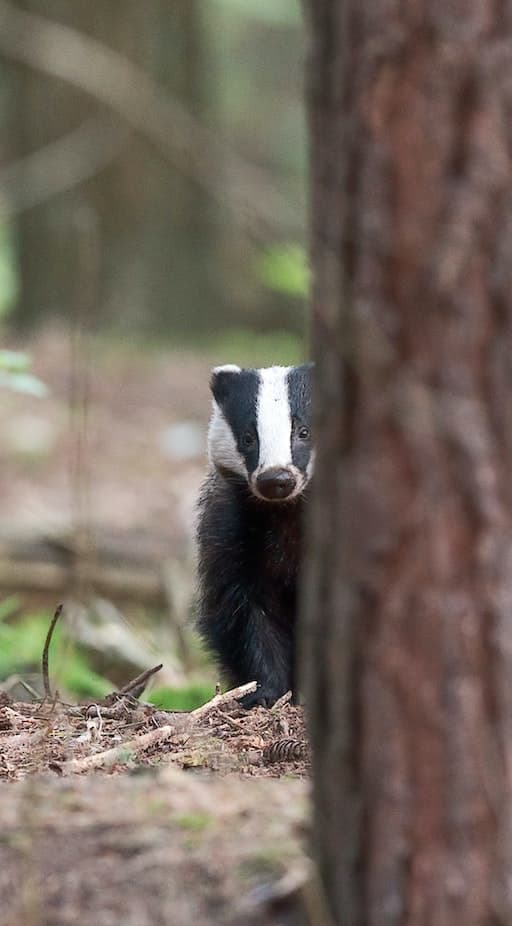Badgers
With their distinctive black and white markings there’s no mistaking a badger. Badgers are nocturnal, meaning they are active at night.
Males have broader, more domed heads and thicker necks. They live in groups, which average about 5 adults. A social group is known as a clan, and only some of the females breed. Badgers live in setts which are usually found in woodland or the edge of fields.
Setts usually are made up of a network of underground tunnels with lots of entrances, with sleeping chambers filled with dead grass. Setts aren’t always dug out of the soil, but can be under sheds or in rocky outcrops. Badger colonies often use several setts - a large main sett in the centre and one or more smaller outer setts. Setts can be used by generations of badgers. In spring and summer badgers dig out their setts, bedding collection is common, especially in September.
Autumn is when the young males disperse. It’s also when mating gets under way again.
What do Badgers Eat?
Badgers feed on nuts, seeds and berries in autumn, trying to build up their fat reserves for winter.
By November animals are less active, especially in wet weather.
During winter Jock doesn’t see much of his badger friends - by December more nights are spent underground.
About Breeding
Only some of the females breed. Implantation of the fertilised eggs takes place around the time of the winter solstice.
Badgers don't hibernate, and in January the females are pregnant, and all the group members are living off their fat reserves.
Most of the cubs are born in February, usually 2 to 3 cubs are reared. February is also the start of the mating season. (But the embryos will not be implanted until late December) Newborn cubs are around 12 cm long with a 3-4 cm tail, and are blind and helpless. Cubs start venturing out in April/May when there is plenty food available for them. To get this timing right females must give birth between January-March, with February the peak month for births.
For loads of information on badgers, visit www.scottishbadgers.org.uk

This is part of the Winter Wildllife information.